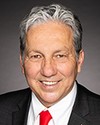Basically, yes. We work with our partners in each region and territory to look at the best way of allocating. It is a formula-driven process to ensure that there's some equity across the board. It's also to ensure that for the smaller communities, there's a base with at least one full-time home and community care nurse as opposed to half-time.
To go back to your earlier question, whilst nine to five sounds so black and white and so rigid, I don't think it's the reality in a number of communities. They might start at eight, end at four, or go into the evening, depending on the need. Robin can correct me on this, but I think another aspect that's important to note is that home care nurses work with the families. They work with the daughters and the sons and the aunties to help out on the basic administration of bandage replacements or what have you. It doesn't end at five, per se.
Again, the band determines, with their local health department, what the best regime is. They will adjust and be flexible. Nine to five sounds too “clinical”, or whatever the right word is. I don't think it's the reality in terms of what the communities want and need.
Generally, with the new investments you'll see a lot more mobility and flexibility in terms of design and hours. That's important to note.



